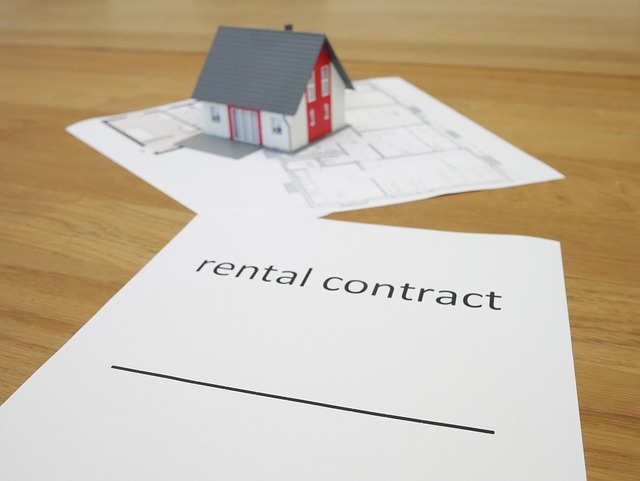Complete Guide to Renovating Your Home: Planning, Budgeting, and Execution
Renovating your home in the US is a big commitment, but with the right planning, it can significantly boost both comfort and resale value. This article guides you through the entire process, from setting a realistic budget to choosing contractors and finalizing materials. Whether you're inspired by a new kitchen gadget ad or a home organization tool in a video, smart planning ensures the project meets your goals without unexpected costs.

Home renovation represents one of the most significant investments homeowners make in their properties. Beyond aesthetic improvements, well-planned renovations can enhance functionality, energy efficiency, and overall home value. However, without proper preparation, these projects can quickly become overwhelming, exceeding both timelines and budgets. Understanding the fundamental principles of renovation planning, budgeting strategies, and implementation techniques is essential for achieving successful outcomes in any home improvement project.
How to Create a Comprehensive Renovation Plan
A well-structured renovation plan serves as your roadmap throughout the project. Begin by clearly defining your goals and priorities. Are you renovating for improved functionality, increased home value, or purely aesthetic reasons? Document everything you want to accomplish, then organize these goals by importance. Next, research local building codes and permit requirements—many renovations require official approval before work can begin.
Assess your timeline realistically. Most renovation projects take longer than initially anticipated, so build buffer time into your schedule. Consider factors like material delivery delays, contractor availability, and potential unforeseen issues. If you’re planning to live in your home during renovations, map out how you’ll manage daily life around construction zones. Creating dedicated living spaces away from work areas can help maintain some normalcy during the process.
Establishing a Realistic Renovation Budget
Budgeting effectively for home renovations requires research and careful planning. Start by determining your maximum spending limit based on available savings, home equity, or financing options. Once you’ve established this ceiling, allocate funds to different aspects of your project based on priority. Industry experts typically recommend setting aside 20% of your total budget as a contingency fund for unexpected expenses.
To develop accurate cost estimates, gather multiple quotes from contractors and research material costs thoroughly. Consider both material quality and longevity in your calculations—sometimes investing in higher-quality materials can save money long-term by reducing maintenance and replacement needs. Don’t forget to include often-overlooked expenses like permit fees, temporary housing if needed, storage costs, and post-renovation cleaning services.
Most Cost-Effective Renovation Ideas for American Homes
Some renovations deliver better returns on investment than others. Kitchen and bathroom updates consistently rank among the most valuable improvements, often recouping 70-80% of costs at resale. However, these don’t have to be complete overhauls. Cabinet refacing rather than replacement, updating hardware, installing new countertops, or replacing outdated appliances can transform these spaces without breaking the bank.
Energy efficiency improvements offer excellent value through both immediate utility savings and potential tax incentives. Consider upgrading to energy-efficient windows, adding insulation, installing programmable thermostats, or updating to ENERGY STAR appliances. Enhancing curb appeal through relatively inexpensive projects like repainting the exterior, updating the front door, refreshing landscaping, or adding outdoor lighting can significantly impact your home’s perceived value.
Renovating Kitchens, Bathrooms, Basements and More
Each area of your home presents unique renovation considerations. Kitchen renovations typically involve decisions about cabinetry, countertops, appliances, and layout changes. For maximum functionality, consider the “work triangle” concept that optimizes movement between the sink, stove, and refrigerator. Bathroom renovations focus on fixtures, waterproofing, ventilation, and maximizing space efficiency. Water-resistant materials and proper ventilation are crucial to prevent moisture damage.
Basement renovations offer opportunities to add significant living space to your home. Key considerations include waterproofing, proper insulation, adequate lighting (both natural and artificial), and meeting egress requirements if creating bedrooms. For any renovation area, carefully consider how the space will be used and design accordingly. Multi-functional spaces that can adapt to changing needs often provide the greatest long-term value.
Selecting and Working with Renovation Contractors
Finding reliable professionals is perhaps the most critical factor in renovation success. Start by seeking recommendations from friends, family, and online review platforms. Always verify credentials, including licenses, insurance coverage, and relevant certifications. Request and check references from previous clients with similar projects. When interviewing potential contractors, assess their communication style, responsiveness, and willingness to provide detailed written estimates.
Once you’ve selected professionals, establish clear communication protocols and documentation practices. Get everything in writing, including detailed contracts that specify scope of work, materials, timeline, payment schedule, and warranty information. Regular progress meetings help ensure everyone remains aligned throughout the project. Remember that the lowest bid isn’t always the best choice—experience, reliability, and quality workmanship often justify higher costs.
Comparing Home Renovation Costs by Project Type
Understanding typical cost ranges can help you budget appropriately for different renovation projects. The following table provides general estimates for common home renovations in the United States:
| Project Type | Average Cost Range | Typical ROI | Timeline |
|---|---|---|---|
| Kitchen Renovation | $15,000 - $50,000+ | 70-80% | 4-8 weeks |
| Bathroom Renovation | $10,000 - $35,000 | 60-70% | 3-6 weeks |
| Basement Finishing | $20,000 - $75,000 | 70-75% | 4-12 weeks |
| Room Addition | $25,000 - $100,000+ | 50-60% | 6-16 weeks |
| Roof Replacement | $5,500 - $15,000 | 60-70% | 1-2 weeks |
| Window Replacement | $3,000 - $15,000 | 70-80% | 1-3 days |
| Exterior Painting | $3,000 - $7,000 | 55-65% | 3-7 days |
Prices, rates, or cost estimates mentioned in this article are based on the latest available information but may change over time. Independent research is advised before making financial decisions.
These figures can vary significantly based on location, materials chosen, home size, and specific project requirements. Urban areas typically have higher labor costs than rural regions. Additionally, supply chain issues and material availability can impact both costs and timelines, making it essential to obtain current, local quotes for your specific project.
Managing the Renovation Process and Solving Problems
Even with careful planning, renovation challenges will arise. Establish a decision-making process before work begins, determining who has final authority on changes and how modifications will be documented. Create a communication system with your contractor for regular updates and addressing concerns promptly. Document progress with photos and maintain organized records of all communications, receipts, and change orders.
When problems occur, address them immediately rather than allowing them to compound. If work quality doesn’t meet expectations, discuss concerns directly with your contractor, referencing contract specifications. For significant disputes, review your contract’s conflict resolution procedures. Throughout the renovation, remain flexible—some adjustments will inevitably be necessary as work progresses and hidden conditions are revealed.
Successful home renovations result from thorough planning, realistic budgeting, and effective project management. By understanding the renovation process, establishing clear priorities, and working with qualified professionals, you can transform your living space while managing costs and minimizing stress. Remember that patience and flexibility are essential throughout the renovation journey, as unexpected challenges will arise even in the most meticulously planned projects.




